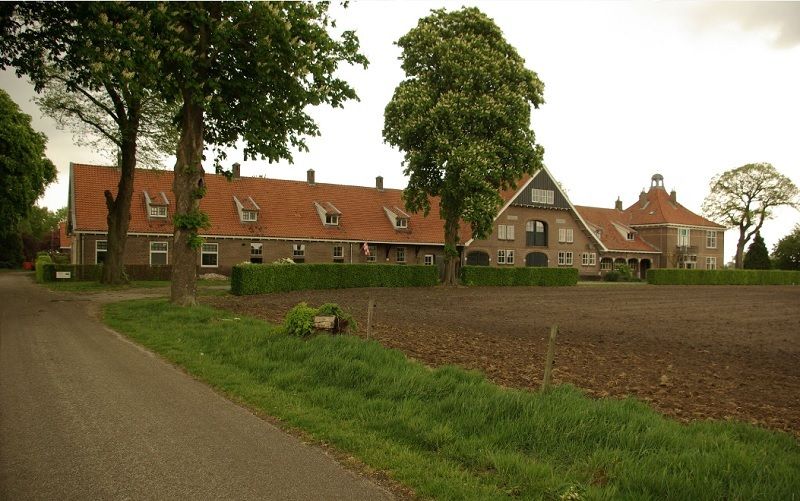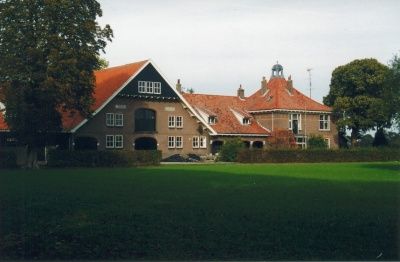Boerderij: De Dompthoeve, Elsendorp
Contact
Elsendorpseweg 7274
5424 SB Elsendorp Plan your route to Boerderij: De Dompthoeve, Elsendorp
The beautiful and unusual Dompthoeve in Elsendorp.
Around 1900, the large-scale reclamation of the wasteland of the Peel was in full swing. The Nederlandsche Heidemaatschappij, a kind of…
The beautiful and unusual Dompthoeve in Elsendorp.
Around 1900, the large-scale reclamation of the wasteland of the Peel was in full swing. The Nederlandsche Heidemaatschappij, a kind of engineering company, reclaimed large areas of heath and swamp on behalf of the landowner, mainly for forestry purposes. Because of the lean peel soil, it was originally thought that other types of agriculture would not thrive. However, limited success was achieved with pasture, through the use of artificial fertilisers. Following this, the pilot farm the Annahoeve was built on the Dompt estate in 1910. The building is characterised by its very large size, especially in a landscape dotted with small nursery farms, and experimental design. It consists of a dwelling house, and cow, pig and horse stables. There was originally room for 200 pigs, 60 cows and 26 horses. That was a huge farm even in terms of animal numbers. There are still farmers today who run a full farm with 60 dairy cows. Gradually, parts of De Dompt were sold and from this the village centre of the village of Elsendorp formed.
Mr Van Musschenbroek owned the Amsterdam Agricultural Society De Peel and was himself from Baarn. In these years, people came from all over the country to realise new land and new opportunities in De Peel. The design was by architect K. Muller, and the construction was done by Gemert contractor Janus van Eupen. The name the Annehoeve came from Van Musschenbroek's daughter, who also laid the foundation stone. In 1926, the name was changed to Hoeve de Dompt and the name was also changed on the gable stones
Sources:
S. Hoeymakers, Houtvesterij de Peel, 1986, Heemkundekring De Kommanderij, Gemert
R. van den Broek, J. Timmers, W. van de Vossenberg, Boerderijen kijken in Gemert-Bakel; Drie fietsroutes langs boerderijen in de gemeente Gemert-Bakel, 2003, Heemkundekring De Kommanderij, Gemert



